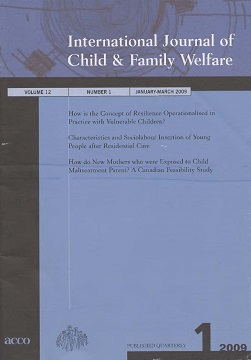Characteristics and Sociolabour Insertion of Young people after Residential Care
Keywords:
residential care, child welfare, child protectionAbstract
This study aims to determine the situation of young people after residential care. The directors of 36 finalist residences that care for young people who will come of age in the same center were interviewed. Residence directors gave information about 143 young people who left the center between 2 and 5 years earlier when they came of age, and who had not been diagnosed with mental deficiency. Most of the young people entered the residence after they were 12 years old due to family negligence. The young people scored highest for autonomy and lowest for emotional regulation. Competences were found to be related to the cause of protection. Half of the sample were emotionally unstable and had not graduated from high school. After leaving the foster residence, a third of the young people went to live with their family, and another third went to live in assisted flats. Girls tend to live with their partners more than boys; and boys tend to live with their family more than girls. 65.7% of the young people received work training but only 59.9% worked, most of them in jobs that don’t need qualifications. 30.4% of the girls became mothers at a young age. The implications of the data are discussed in the article.

